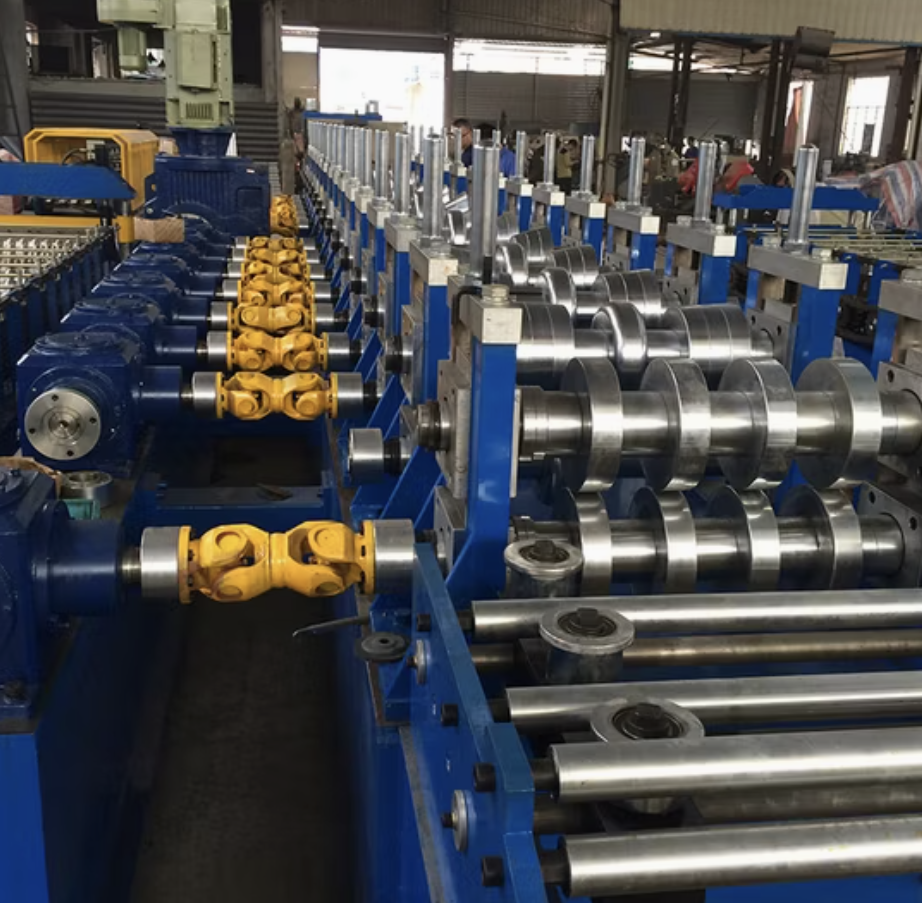To express an interest in this machine please submit the form below.

Not Sure What Machine You Need?
Select Your Profile, We'll Match It
Choose your desired profile drawing, and let Machine Matcher connect you with the best roll forming machine tailored to your needs.
Browse Profiles



A Crash Barrier Roll Forming Machine is specifically designed to produce crash barriers, also known as guardrails or highway guardrails. These barriers are crucial for road safety, preventing vehicles from straying off roads or crossing into opposite lanes. The machine forms high-quality steel profiles that meet safety and durability standards for use in highways, bridges, and other infrastructure projects. Crash barrier profiles are typically made in "W" and "Thrie" beam shapes, conforming to stringent safety and quality guidelines globally.
1. What types of crash barrier profiles can this machine produce?
The machine is designed to produce standard W-beam and Thrie-beam profiles, the most commonly used crash barrier types globally. These profiles are essential for highway and road safety applications.
2. What materials can be used in the machine?
Typically, hot-dip galvanized steel or coated steel is used, with a thickness range of 2-4 mm, providing corrosion resistance and strength for crash barriers.
3. How does the punching system work in this machine?
The machine is equipped with a servo-controlled hydraulic punching system that precisely punches holes at specific intervals, ensuring accurate alignment for easy installation.
4. What is the maximum speed of this machine?
The machine generally operates at 10-15 meters per minute with punching and can reach up to 25 meters per minute without punching, depending on the material type and thickness.
5. Is the machine compatible with different power supplies?
Yes, the machine can be customized to operate on various power supplies, such as 220V, 380V, or 440V, depending on the country’s specifications.
6. How does the PLC system work?
The PLC (Programmable Logic Controller) is used to control machine functions, including material feeding, punching, and cutting, and ensures precision through automation, minimizing human error.
7. Can the machine be operated remotely?
Yes, with optional remote PLC systems, operators can manage machine settings and monitor performance from a distance, which enhances safety and efficiency in production lines.
8. What are the safety features included in the machine?
The machine is equipped with full safety guards and enclosures to protect operators. Emergency stop buttons are strategically placed for immediate shutdown in case of issues.
9. What maintenance does the machine require?
Regular maintenance includes lubrication of moving parts, cleaning the rollers and conveyor, checking the hydraulic system, and verifying the alignment of rollers to ensure accurate profiling.
10. How can this machine help my business reduce costs?
The machine automates crash barrier production, reducing labor costs and increasing efficiency. Its high speed and accuracy decrease material waste, and the ability to produce standard crash barrier profiles ensures compliance with industry standards.
Copyright 2025 © Machine Matcher.